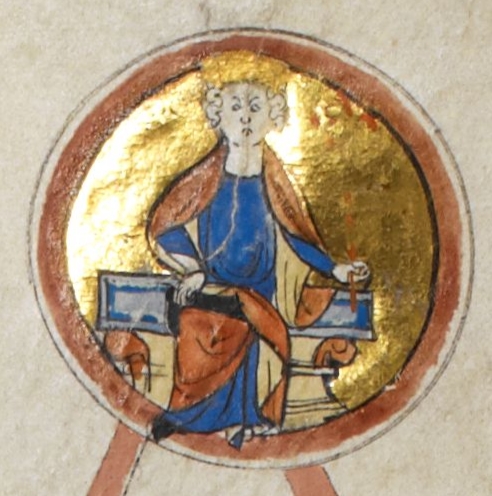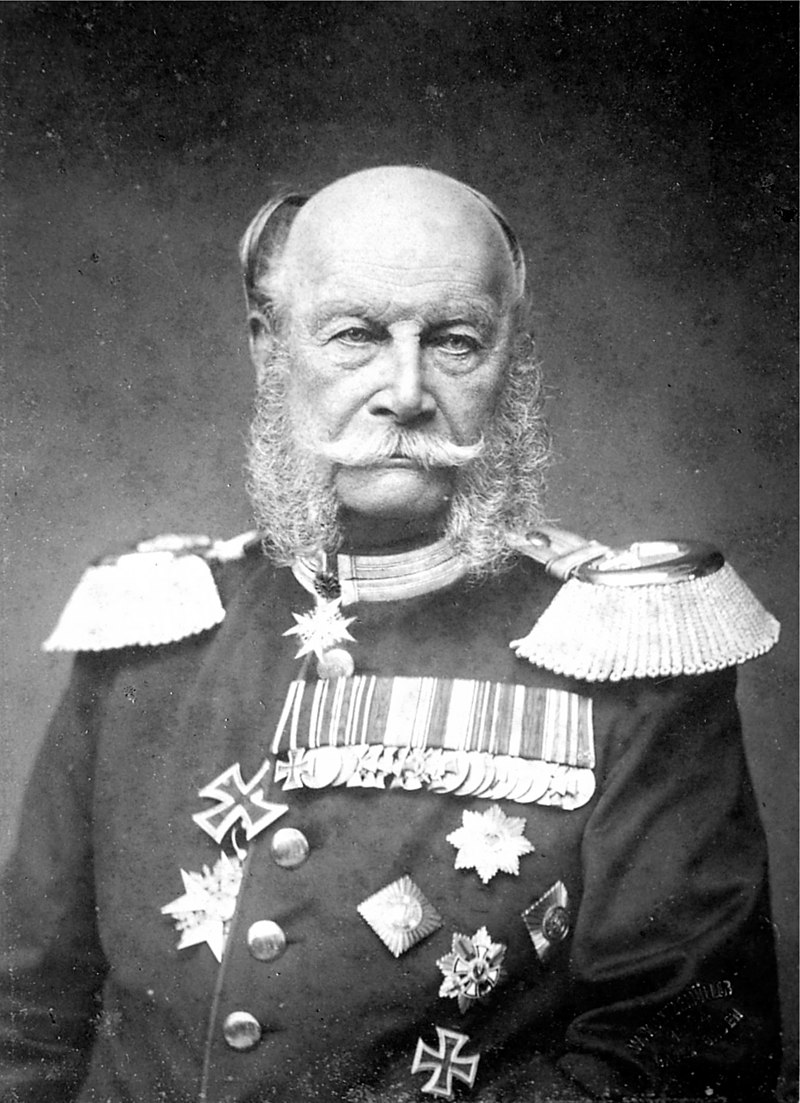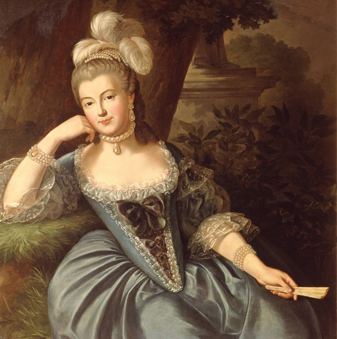© Unofficial Royalty 2025

Tomb of King Henry IV of England and his second wife Joan of Navarre at Canterbury Cathedral; Photo Credit © Susan Flantzer
March 20, 1413 – Death of King Henry IV of England in the Jerusalem Chamber in the home of the abbot at Westminster Abbey in London, England; buried at Canterbury Cathedral in Canterbury, Kent, England
King Henry IV of England, who usurped the throne from his first cousin King Richard II of England, and became the first Lancaster king, was the eldest surviving son of John of Gaunt (third surviving son of King Edward III of England) and his first wife Blanche of Lancaster. In 1380, Henry married heiress Mary de Bohun. Henry and Mary had six children but Mary died giving birth to their last child at the age of 25. In 1403, Henry married Joan of Navarre. They had no children but Joan got along well with her stepchildren. During much of King Henry IV’s 13-year reign, he was occupied with war. While in prayer at the shrine of Edward the Confessor at Westminster Abbey, Henry suffered a fatal attack, possibly a stroke. He was carried to the Jerusalem Chamber, a room in the house of the abbot, where he died at age 45. Henry was not buried at Westminster Abbey but instead requested that he be buried at Canterbury Cathedral, presumably because of an affinity towards St. Thomas Becket whose shrine was there.
Unofficial Royalty: King Henry IV of England
March 20, 1469 – Birth of Cecily of York, daughter of King Edward IV of England, at the Palace of Westminster in London, England
Cecily was the daughter of Edward IV, the first King of England from the House of York, and Elizabeth Woodville. In 1485, Cecily’s uncle King Richard III arranged for a marriage for Cecily to Ralph Scrope, who was much below her in status to rule out her claim to the throne. When Henry VII, the first Tudor king, came to the throne, Cecily’s marriage to Ralph Scrope was annulled because the marriage was not in the interests of the new Tudor dynasty. Cecily was married to a nobleman loyal to King Henry VII, John Welles, 1st Viscount Welles, the younger half-brother of King Henry VII’s mother Lady Margaret Beaufort. Cecily and John had two daughters who both died in childhood. After the death of her husband and daughters, Cecily returned to the court seeking comfort and protection from her older sister Elizabeth of York who had married King Henry VII. Lady Margaret Beaufort, Henry VII’s mother, also helped Cecily by protecting her rights to her deceased husband’s property that his half-sisters claimed. Cecily married Sir Thomas Kyme without the permission of King Henry VII. Cecily died on August 24, 1507, aged 38, but her place of death and burial site are uncertain.
Unofficial Royalty: Cecily of York, Viscountess Welles
March 20, 1619 – Death of Matthias, Holy Roman Emperor, King of Bohemia, Archduke of Austria, Archduke of Further Austria, King of Hungary and Croatia, in Vienna, Austria; temporarily buried at the Poor Clares Convent of St. Maria, Queen of the Angels in Vienna; reburied on On Easter 1633 at the Capuchin Church in Vienna in what is now called the Founders Vault.
Matthias, Holy Roman Emperor (reigned 1612 – 1619) was also King of Bohemia (reigned 1611 – 1617), Archduke of Austria (reigned 1608 – 1619), Archduke of Further Austria, (1608 – 1619), King of Hungary and Croatia (reigned 1608 – 1618). In 1611, Matthias married his first cousin Anna of Tyrol. Although Matthias was 54 years old, he hoped to have children with his 26-year-old wife but their marriage was childless. Although Matthias and his wife Anna did not leave any children, they left the future Habsburgs a burial site. Matthias and Anna founded the Capuchin Church (German: Kapuzinerkirche) in Vienna, Austria, where the Imperial Crypt (German: Kaisergruft), the traditional burial site of the Habsburgs, is located.
Unofficial Royalty: Matthias, Holy Roman Emperor, King of Bohemia, Archduke of Austria, Archduke of Further Austria, King of Hungary and Croatia
March 20, 1739 – Birth of Princess Maria Josepha of Bavaria, the second of the two wives of Joseph II, Holy Roman Emperor, in Munich, then in the Electorate of Bavaria, now in the German state of Bavaria
Maria Josepha of Bavaria was the second of the two wives of Joseph II, Holy Roman Emperor who also was the ruler of the Habsburg hereditary lands. Joseph never loved Maria Josepha, and the marriage was probably never consummated. Joseph avoided sharing a bedroom and even had their shared balcony in Schönbrunn Palace partitioned off so he would not have to see Maria Josepha. A severe smallpox epidemic broke out in 1767, and Maria Josepha came down with the disease. Although Joseph, who had survived smallpox at an earlier time, had nursed his first wife as she was dying from smallpox, he did not visit Maria Josepha while she was ill. Maria Josepha, aged 28, died from smallpox at Schönbrunn Palace in Vienna, Austria.
Full name: Maria Josepha Antonia Walburga Felizitas Regula
Unofficial Royalty: Maria Josepha of Bavaria, Holy Roman Empress
March 20, 1811 – Napoleon II, Emperor of the French, son of Napoleon I, Emperor of the French and his second wife Marie-Louise of Austria, at the Tuileries Palace in Paris, France
Full name: Napoléon François Charles Joseph Bonaparte
Napoléon I divorced his childless first wife Joséphine de Beauharnais telling her he needed to find another wife who could provide him with a son. He married Marie Louise of Austria and they had one son Napoléon François Charles Joseph Bonaparte. After his defeat at the Battle of Waterloo, Napoléon I abdicated in favor of his four-year-old son and was exiled to the island of Saint Helena. Napoléon II “reigned” for two weeks, when King Louis XVIII of France, the elder of the two surviving brothers of the beheaded King Louis XVI of France, returned to France to resume the throne he had vacated earlier that year due to Napoléon I’s return from his first exile. Napoléon II and his mother lived in her homeland of Austria. He had been dealing with lung problems from a very early age and eventually developed tuberculosis. He died on July 22, 1832, at Schönbrunn Palace in Vienna, Austria at the age of twenty-one.
Unofficial Royalty: Napoléon François Charles Joseph Bonaparte, Napoleon II
March 20, 1816 – Death of Queen Maria I of Portugal at the Carmo Convent in Rio de Janeiro, Brazil. She was initially interred at the Convent of Ajuda in Rio de Janeiro, Brazil. In 1821, Maria’s remains were transported to Lisbon where she was buried in the Estrela Basilica, a church she ordered to be built.
The first of the two Queen Regnants of Portugal, Maria was the eldest of the four children and the eldest of the four daughters of José I, King of Portugal. It was inevitable that Maria would become the reigning Queen of Portugal. However, since female succession to the throne of Portugal had never happened before, her father decided that Maria would marry his younger brother Infante Pedro of Portugal, the first male in the line of succession. In 1760, 25-year-old Maria married her 42-year-old paternal uncle Pedro. Maria and Pedro had six children. Maria is considered to have been a good ruler in the period before her mental instability, which was first noticed in 1786 when she had to be carried back to her apartments in a state of delirium. Her mental instability continued to worsen. The deaths of her husband Pedro in 1786, her eldest son and heir José in 1788, and her confessor Inácio de São Caetano, Archbishop of Salonica in 1788 may have caused major depressive disorder. Her second son João, now heir to the throne, then served as prince regent. Maria spent the last eight years of her life in Brazil, always in a state of mental instability. On March 20, 1816, Maria I, Queen of Portugal died, aged 81, at the Carmo Convent in Rio de Janeiro, Brazil. She was initially interred at the Convent of Ajuda in Rio de Janeiro, Brazil. In 1821, when the Portuguese royal family returned to Portugal, Maria’s remains were transported to Lisbon where she was buried in the Estrela Basilica, a church she ordered to be built.
Unofficial Royalty: Queen Maria I of Portugal
March 20, 1842 – Death of George FitzClarence, 1st Earl of Munster, illegitimate son of King William IV of the United Kingdom and his mistress Dorothea Jordan, by self-inflicted gunshot wound, at his home in Belgravia, London; buried at St. Mary’s Church in Hampton in the London Borough of Richmond upon Thames
George was the first of ten children of King William IV of the United Kingdom and his mistress Dorothea Jordan. In 1819. George married Mary Wyndham, the daughter of George Wyndham, 3rd Earl of Egremont and his mistress Elizabeth Fox. The couple had seven children. George served as an army officer during the Peninsular War (1807–1814) and then served in India. He attained the rank of Major-General in the British Army. His father was proud of George’s military record but was very concerned with his drinking and gambling, issues which also affected some of William’s brothers. On March 20, 1842, at his home in Belgravia, London, 48-year-old George FitzClarence, 1st Earl of Munster killed himself with a pistol given to him by his uncle King George IV when he was Prince of Wales. His suicide came as no surprise to his family, who had long been concerned about his mental condition.
Unofficial Royalty: George FitzClarence, 1st Earl of Munster
March 20, 1878 – Birth of Heinrich XXIV, 6th Prince Reuss of Greiz in Greiz, Principality of Reuss-Greiz, now in Thuringia, Germany
As a result of a childhood accident, Heinrich XXIV had physical and mental disabilities that prevented him from marrying and ruling the Principality of Reuss-Greiz. Two regents from the House of Reuss-Gera successively ruled the Principality of Reuss-Greiz: Heinrich XIV, 4th Prince Reuss of Gera from 1902 – 1913, and then his son Heinrich XXVII, 5th and last Prince Reuss of Gera from 1913 – 1918, when the German monarchies were abolished in 1918 at the end of World War I.
Unofficial Royalty: Heinrich XXIV, 6th Prince Reuss of Greiz
March 20, 1895 – Death of Woldemar, Prince of Lippe in Detmold, Principality of Lippe now in Germany; buried in the Mausoleum at the Büchenberg in Detmold
In 1858, Woldemar married Princess Sophie of Baden but their marriage was childless. Woldemar succeeded his childless elder brother Leopold III, Prince of Lippe upon his death in 1875. Apart from his grandmother Princess Pauline, who served as Regent for eighteen years for her son Leopold II until he reached his majority, no other Prince of Lippe dealt with government affairs as successfully as Woldemar did. Woldemar and his elder brother Leopold were the only ones of eight siblings who married and neither had any children. Woldemar died in 1895, aged 70. His only surviving brother Alexander suffered from mental illness and had been declared incapacitated and therefore, was incapable of governing. A regency was necessary during Alexander’s reign. This created a succession crisis. After the death of Woldemar’s successor and brother Alexander and the extinction of the Lippe-Detmold line, the throne of the Principality of Lippe went to Count Leopold of Lippe-Biesterfeld who would be the last Prince of Lippe.
Unofficial Royalty: Woldemar, Prince of Lippe
March 20, 1926 – Death of Lovisa of Sweden, Queen of Denmark, wife of King Frederik VIII of Denmark, at Amalienborg Palace in Copenhagen, Denmark; buried at Roskilde Cathedral in Roskilde, Denmark
Lovisa was the only surviving child of King Carl XV of Sweden and Princess Louise of the Netherlands. She has an interesting royal ancestry. Besides being descended from the Kings of Sweden, Lovisa is also a descendant of Empress Josephine of France via her first marriage, King Maximilian I Joseph of Bavaria, King Willem I of the Netherlands, King Friedrich Wilhelm III of Prussia, and King George I of Great Britain. In 1869, she married the future King Frederik VIII of Denmark. They had eight children including King Christian X of Denmark, Prince Carl of Denmark later King Haakon VII of Norway, and Princess Ingeborg of Denmark whose children include Märtha Louise, Crown Princess of Norway and Astrid, Queen of the Belgians. Louise died on March 20, 1926, at the age of 75.
Unofficial Royalty: Lovisa of Sweden, Queen of Denmark
March 20, 1934 – Death of Queen Emma of the Netherlands, born Emma of Waldeck-Pyrmont, wife of King Willem III of the Netherlands, at the Palace Lange Voorhout in The Hague, the Netherlands; buried at Nieuwe Kerk in Delft, the Netherlands
In 1877, Queen Sophie, the first wife of King Willem III of the Netherlands died, and Willem was eager to marry again to ensure the future of the House of Orange. One of his three children (all sons) had died and neither of the other two sons was married. At the suggestion of his only sister, he got in touch with the royal couple of Waldeck and Pyrmont, who had several marriageable daughters. In July 1878, Willem visited the family at their summer home where he met 23-year-old Princess Pauline and 20-year-old Princess Emma. His eyes first fell on Pauline, but soon he chose Emma and proposed to her. Willem was 61 years old, 41 years older than Emma. Emma had lessons in the Dutch language and history before her marriage because she wanted to come to her new country Dutch. The couple was married on January 7, 1879. Emma had a positive influence on Willem and the marriage was extremely happy. Their only child Wilhelmina succeeded her father as Queen of the Netherlands. Emma ably served for eight years as Regent of the Netherlands when her ten-year-old daughter Wilhelmina became Queen of the Netherlands. Emma died on March 20, 1934, at the age of 75 from pneumonia.
Unofficial Royalty: Emma of Waldeck-Pyrmont, Queen of the Netherlands
March 20, 1947 – Birth of Prince Hassan bin Talal of Jordan in Amman, Jordan
Prince Hassan is the son of King Talal and Queen Zein and a younger brother of King Hussein I. In 1965, King Hussein I named his brother Hassan Crown Prince, and he often served as Regent. He remained Crown Prince until just days before King Hussein died in 1999 when the King named his eldest son Abdullah as Crown Prince. In 1968, Hassan married Sarvath Ikramullah and the couple had four children. Prince Hassan and Princess Sarvath often represent the Jordanian royal family at royal events around the world.
Unofficial Royalty: Prince Hassan of Jordan
March 20, 2004 – Death of Princess Juliana of the Netherlands, formerly Queen Juliana, at the Soestdijk Palace in Baarn, the Netherlands; buried at the Nieuwe Kerk in Delft, the Netherlands
Juliana was the only child of Queen Wilhelmina of the Netherlands and her husband Prince Hendrik of Mecklenburg-Schwerin. In 1936, she married Prince Bernhard of Lippe-Biesterfeld and they had four daughters. After a reign of nearly 58 years, Queen Wilhelmina abdicated in favor of her daughter and Juliana became Queen of the Netherlands. Juliana was a much more relaxed monarch than her mother had been and this lessened the distance between the royal family and the Dutch people. She often appeared in public dressed like any ordinary Dutch woman, and preferred to be addressed as “Mevrouw” (Dutch for “Mrs.”) rather than her formal “Majesty”. Juliana’s love of bicycling for exercise gave rise to the royal family’s nickname, “the cycling family.” In 1980, Juliana abdicated in favor of her eldest daughter Beatrix. After 1995, when Juliana’s general health began to decline, she made fewer public appearances. Her last public appearance was in 1998 at the wedding of her grandson Prince Maurits. Juliana suffered from Alzheimer’s disease for several years. She died in her sleep at the age of 94 due to pneumonia.
Unofficial Royalty: Queen Juliana of the Netherlands
March 20, 2008 – Death of of Prince Ferdinando of Bourbon-Two Sicilies, Duke of Castro in in Draguignan, France
Prince Ferdinando of Bourbon-Two Sicilies, Duke of Castro, was a claimant to the headship of the House of Bourbon-Two Sicilies, and the former throne of the Kingdom of Two Sicilies, from 1973 until he died in 2008.
Unofficial Royalty: Prince Ferdinando of Bourbon-Two Sicilies, Duke of Castro
This article is the intellectual property of Unofficial Royalty and is NOT TO BE COPIED, EDITED, OR POSTED IN ANY FORM ON ANOTHER WEBSITE under any circumstances. It is permissible to use a link that directs to Unofficial Royalty.













